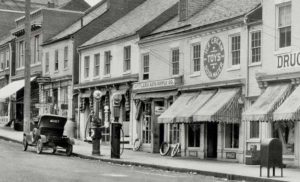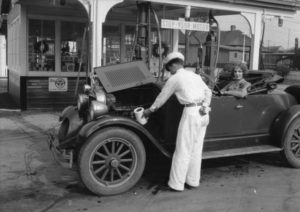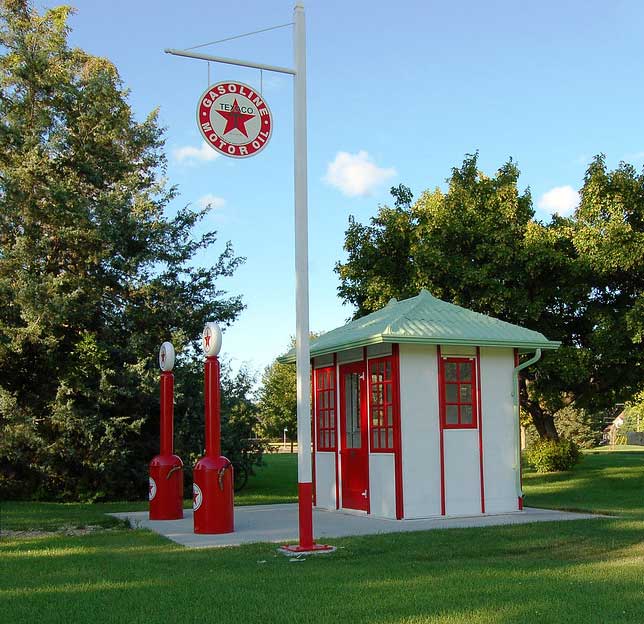Small Home Gazette, Fall 2021
History Brief: Fill ‘er Up!
 In 1905, Sylvanus Freelove Bowser developed a pump to safely transfer gasoline from a barrel into a car’s tank, launching the “filling station” business. Gasoline was sold from sidewalk pumps, obstructing traffic flow as cars pulled up to refuel. By 1910, with a half-million U.S. cars, curbside became a problem.
In 1905, Sylvanus Freelove Bowser developed a pump to safely transfer gasoline from a barrel into a car’s tank, launching the “filling station” business. Gasoline was sold from sidewalk pumps, obstructing traffic flow as cars pulled up to refuel. By 1910, with a half-million U.S. cars, curbside became a problem.
 The drive-in filling station was the solution. They were the first purpose-built commercial buildings to be set back from the street and eventually dominated the roadside landscape. Besides gas and oil, services included free air and water plus the first free road maps.
The drive-in filling station was the solution. They were the first purpose-built commercial buildings to be set back from the street and eventually dominated the roadside landscape. Besides gas and oil, services included free air and water plus the first free road maps.
By 1925, stations began adding oil-change services. Other services followed—greasing; car washing; and sales of tires, batteries and accessories—making the filling station a true service station.

Built in 1919 by the Guerin family, this tiny building is thought to be the oldest filling station in Minnesota. It has been relocated to a site by the Shoreview fire station and restored by the Shoreview Historical Society. Supposedly Chicago gangsters, including Baby Face Nelson and Ma Barker, stopped by to fill their tanks on the way to local cottages and taverns.











